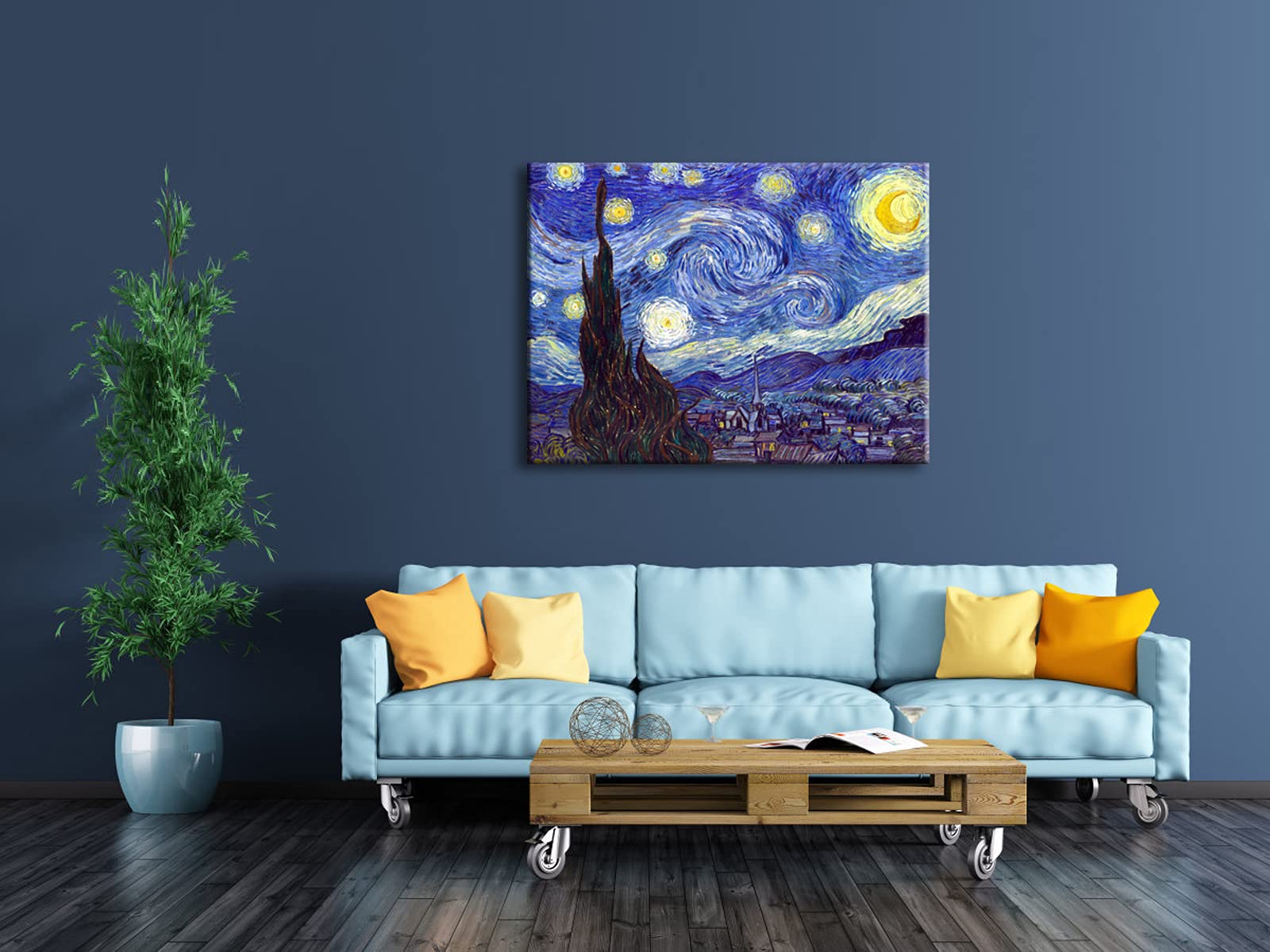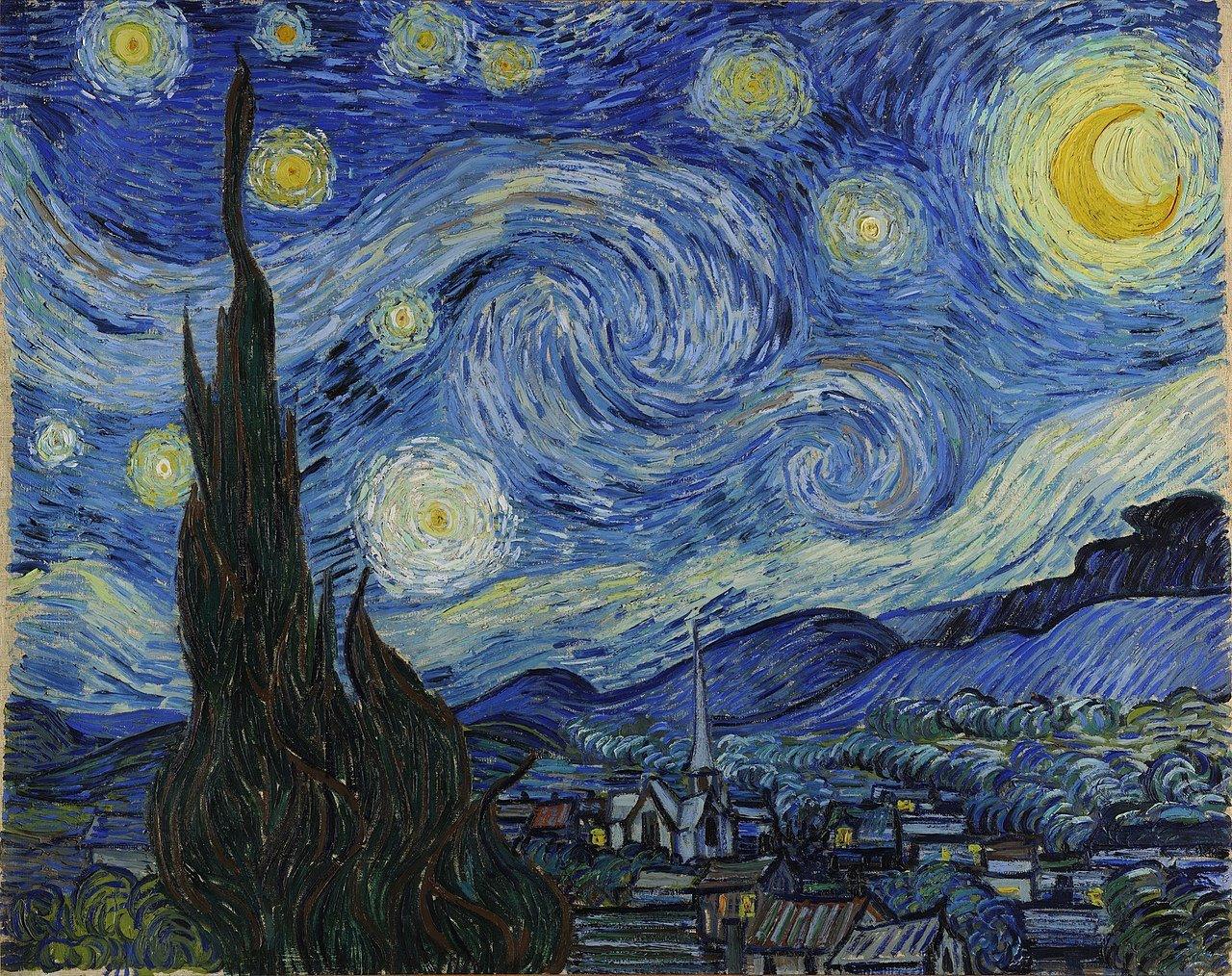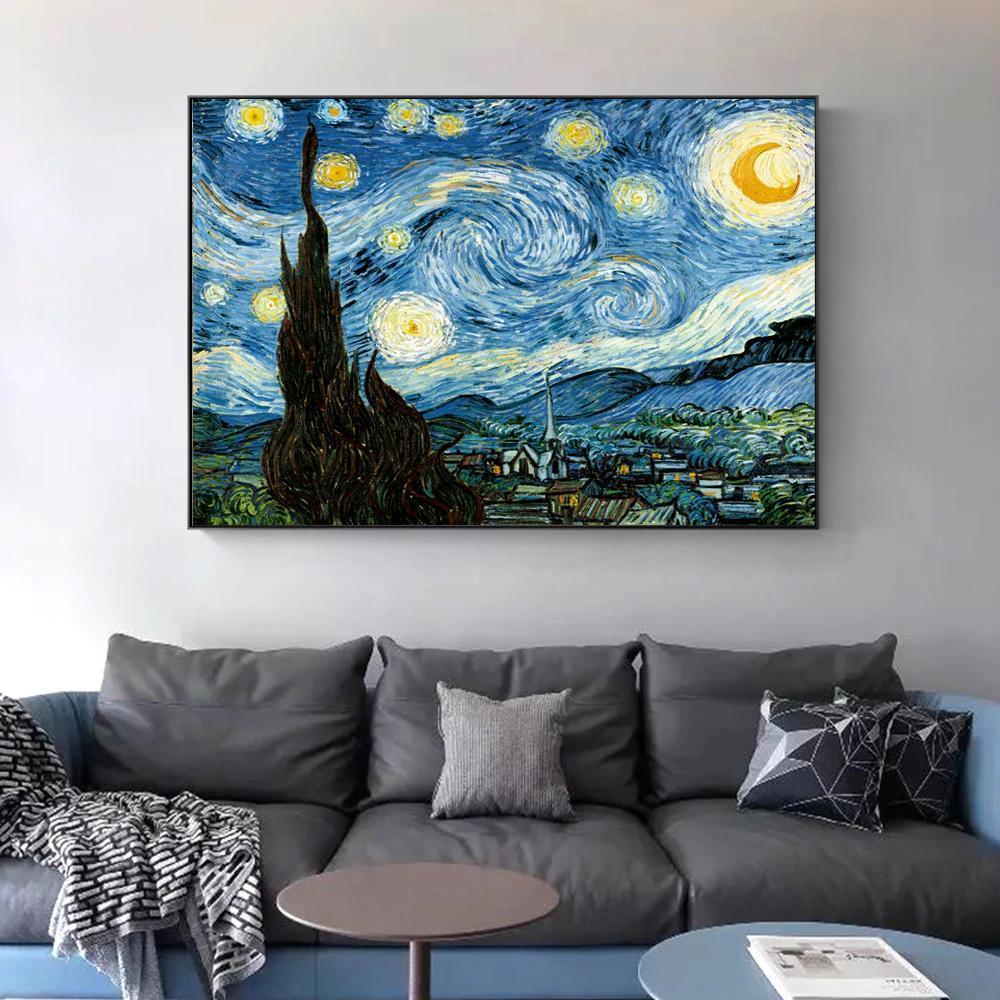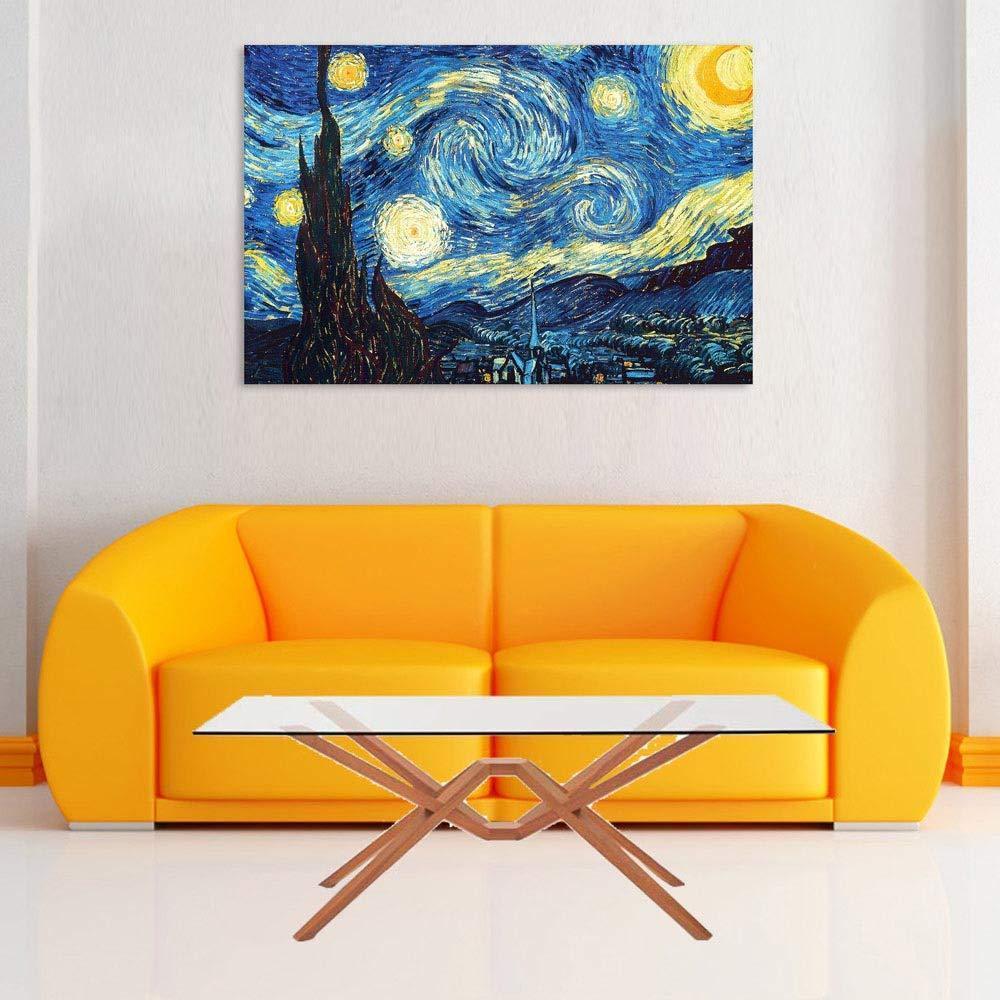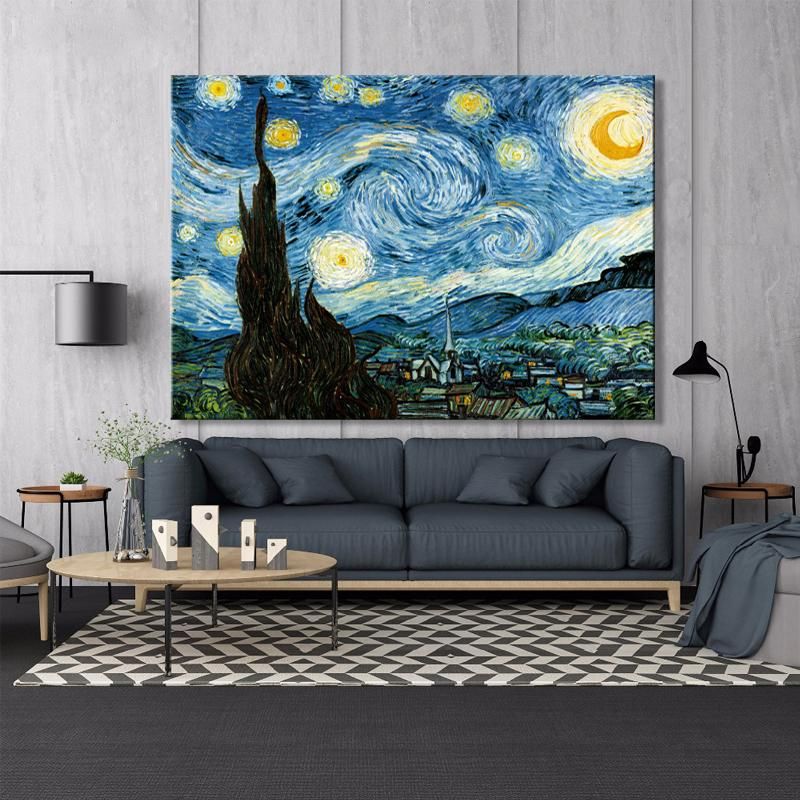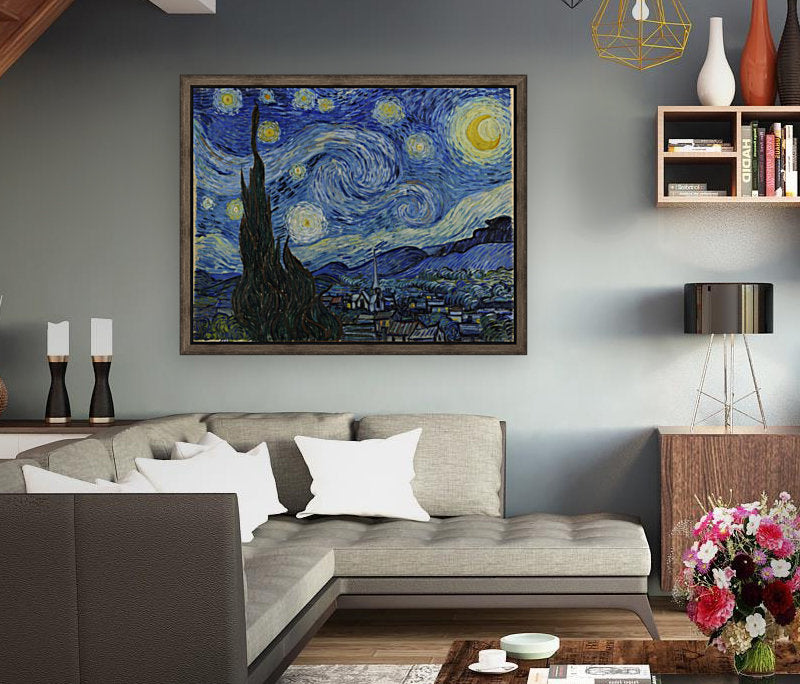Description
Widely acclaimed as Vincent Van Gogh's masterpiece, the painting depicts the view from his sanitarium window at night, though it was actually painted from memory during the day.
"Stargazing always makes me dream," he said, "Why, I wonder, shouldn't the bright spots in the sky be just as accessible as the black spots on the map of France? Just as we took the train to Tarascon or Rouen, it takes death to reach a star."
The artist wrote to his brother about his almost momentous experience: "This morning I saw the field from my window long before dawn, with nothing but the morning star, which looked very large." This morning star, or Venus, may be the large white star to the left of center in The Starry Night. The village, on the other hand, is made up, and the church tower evokes Van Gogh's homeland of the Netherlands.
Painting, like its daytime companion, Los Olivos, has its roots in imagination and memory. Van Gogh turned his work into a symbol for all expressionist painting to come.
An interesting fact about this painting is that Van Gogh created it from his own room in the asylum, from his memory and from the view from his window, since he could not go outside due to his condition. The image of the starry night over the village was one of many that Van Gogh painted during his stay in the asylum, but it is the one that has become one of his most iconic works.
Furthermore, although it is an image popularly associated with the tranquility and beauty of the night, Van Gogh was going through a time of great personal suffering when he painted this work. The Starry Night can be seen as a metaphor for Van Gogh's internal struggle and his desire to find peace in the midst of the storm.
It should be noted that "The Starry Night" has been the subject of numerous interpretations and critical analysis over time, and has been widely influenced by Japanese culture and art, which Van Gogh deeply admired. The work has also been reproduced in various formats, from posters and t-shirts to mugs and phone cases, becoming an iconic image of popular culture.
In a 2014 TED Talk, scientific research associate Natalya St. Clair explained how the movement in the painting hinted at an extremely complicated mathematical concept called turbulent flow decades before scientists discovered it.
In 2004, using the Hubble Space Telescope, scientists saw the eddies of a distant cloud of dust and gas around a star, and it reminded them of Van Gogh's 'Starry Night.' That motivated scientists to study Van Gogh's paintings. Van Gogh in detail and when they did, they discovered that there is a distinctive pattern of turbulent fluid structures hidden in many of the artist's paintings.
The Starry Night is ranked no. 2 on the list of famous paintings

